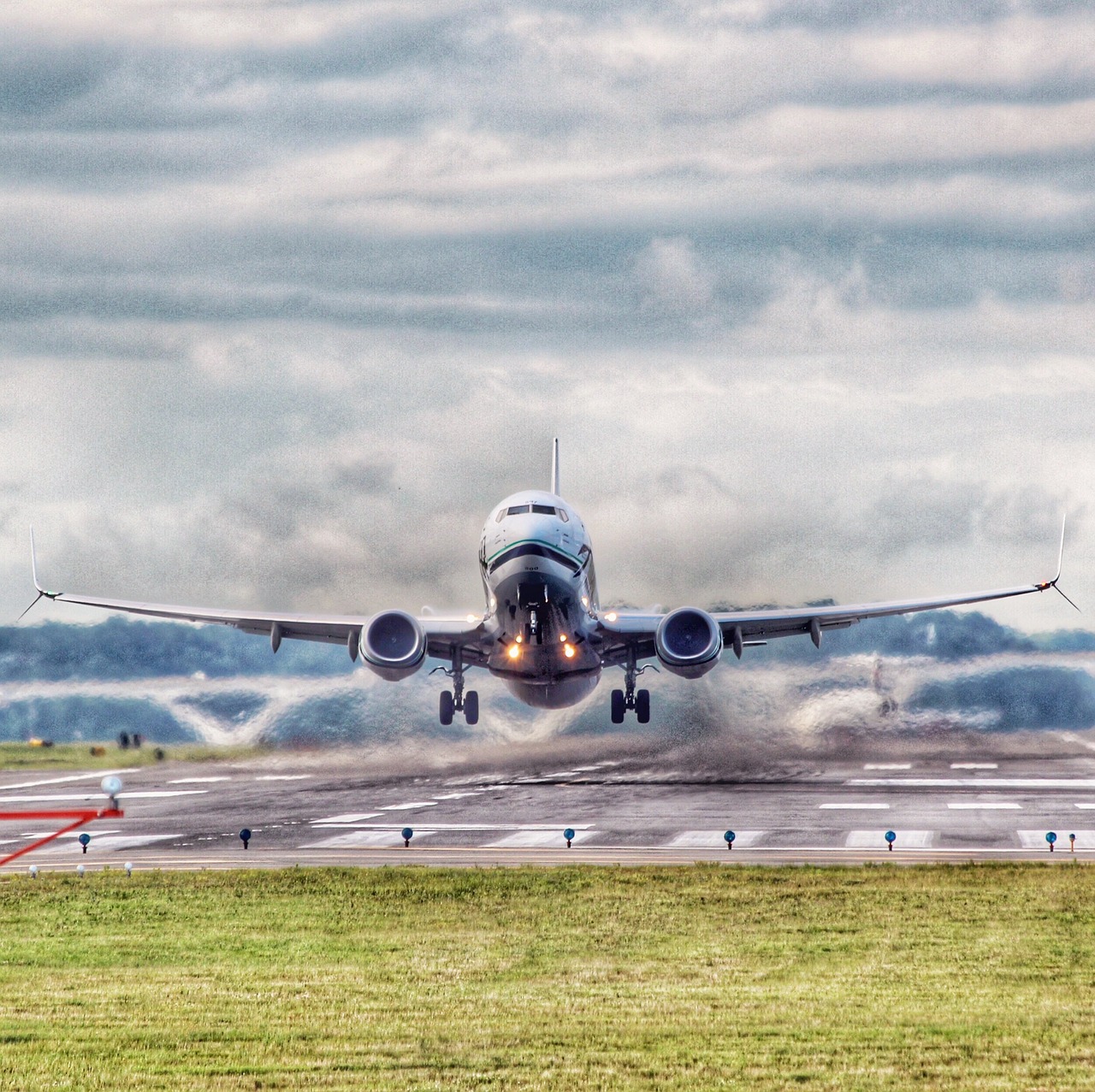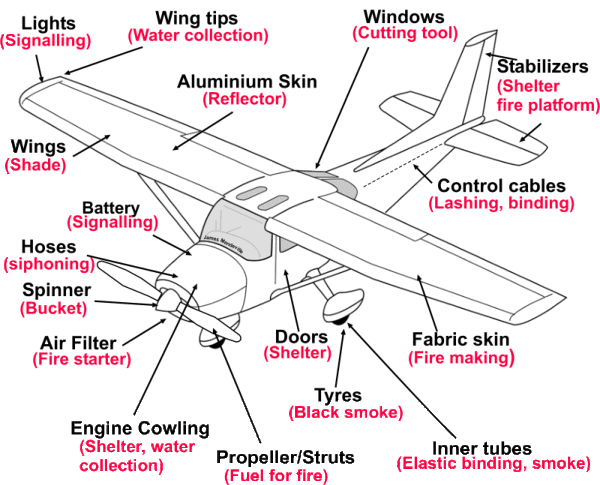Surviving A Plane Crash Pt3 – Using aircraft parts in survival

This is the 3rd and final part of our series on Surviving a plane crash, this article covers what you can use from the plane for after you’ve survived the crash but before you’ve been rescued, there’s still work to be done!
Part 1 is HERE – Surviving a Plane Crash – When It Happens
Part 2 is HERE – Surviving a Plane Crash Pt2 – Planning

Survival uses for aircraft parts:
The first rule of rescue is to get as far away from a crashed aircraft as possible immediately after escape. This is very important if the aircraft is a passenger jet because there is a high risk of aviation fuel catching fire and the tanks exploding. There may also be secondary explosions.
Once you are certain there is no risk of fire or explosion, you should scavenge for usable survival equipment. The second golden rule is to stay within the vicinity of the crash site so rescuers can spot you more easily. If you are in a crash–landing of a light aircraft or commercial piston–engine plane and end up (especially in winter) in a remote area, this is a list of how to use parts from the aircraft to aid your survival.
If you are a survivor of a crash in a commercial jet airliner, the basic ideas still hold true, but removing aircraft parts may be more difficult. Most of these ideas also apply to using parts from any vehicle in a survival situation.
The following suggestions cover most eventualities, but you are only limited by your own ingenuity.
Air filter: Fire starter, since it is usually made of paper and is impregnated with highly flammable fuel and oil.
Aluminum skin: Reflector for warmth from a fire; signaling device; splint; sled, snow shovel or saw blade.
Battery: Signalling with aircraft lights or radio; fire starter.
Battery box: Stove or cooking container.
Charts and maps: Stuff them inside clothing for insulation. (Don’t burn them, since you may need them for navigation if it becomes inevitable that you need to walk out.)
Compass: Direction indicator.
Control cables/electrical wiring: Binding for shelter making, splints or general lashings. Use thick wire to make fish hooks and fine wire as fishing line.
Doors: Shelter, windbreak or sled for hauling.
Engine cowling: Shelter; water collection; windbreak or fire platform.
Engine magnetos: Fire starter.
Engine oil and fuel: Fire starter and fuel for the fire; makes black smoke for signaling. Be very careful with aviation fuel near a naked flame.
Fabric skin: Fire starting material and fuel or for water collection.
Hoses: Siphoning fuel from the tank.
Inner tubes: Cut into strips makes binding material. Makes black smoke when burned. Inflated inner tubes are useful as flotation aids.
Interior fabric: Water straining or filtering. Making emergency clothing, coverings, bandages or fuel for fire starting. Emergency sun glasses or snow goggles.
Landing lights and strobes: Signals when used with battery; lights at night and reflective surfaces for signaling when the battery dies.
Nose cone spinner: Bucket for water, oil and fuel. Scooping tool; pot for cooking and funnel.
Oil filter: Burn the filter to make dense, black smoke.
Rotating beacon lens: Drinking cup.
Rugs: Ground pad; insulation; clothing or warm covering.
Seats: Sleeping cushions; back brace for spinal injury; insulation; ground pad and sponge rubber for neck support. Foam from seats can make eye covering to prevent snow blindness and can be used to make insulated foot covering if you have to walk through snow.
Seat belts: Binding material, slings or bandages
Tires: Make black smoke when burned. Useful as flotation aids. Can be cut up to make very tough “flip–flop” type sandals.
Vertical stabilizer: Shelter support or fire platform.
Windows: Cutting tool or signaling mirror.
Wings: Use for making windbreaks, shelter supports, overhead shade, a platform for fire, water collector or signaling device.
(If the aircraft is intact, blankets or plastic tarps draped over the wings and secured to the ground make an excellent tent.)
Wing tips: Drip collection or water carrier.
Wiring: Binding and rope. It is possible to start a fire with sparks made by shorting out the battery.
Wooden wing struts, braces or propellers: Fire starter, fuel and construction material for a shelter.
Luggage and debris from luggage: Search for clothing, food, water and medical supplies according to need. Search for working cell phones, torches and cigarette lighters.

Thanks to James Mandeville for this article. Jame is an ex-Army survival instructor and runs the popular survival website site Survival Expert.
He has many years experience in difficult terrain, notably the Amazon, the African bush and climbing in various mountain regions including the Drakensburg Mountains and the Andes.
If you have any comments then please drop us a message on our Outdoor Revival facebook page
If you have a good story to tell or blog let us know about it on our FB page, we’re also happy for article or review submissions, we’d love to hear from you.
We live in a beautiful world, get out there and enjoy it.
Outdoor Revival – Reconnecting us all with the Outdoors
